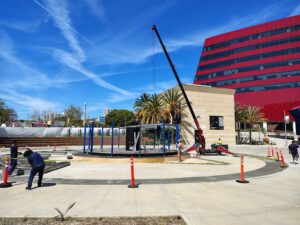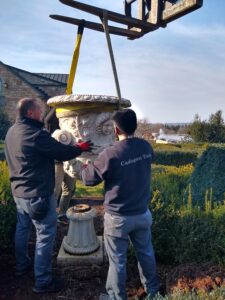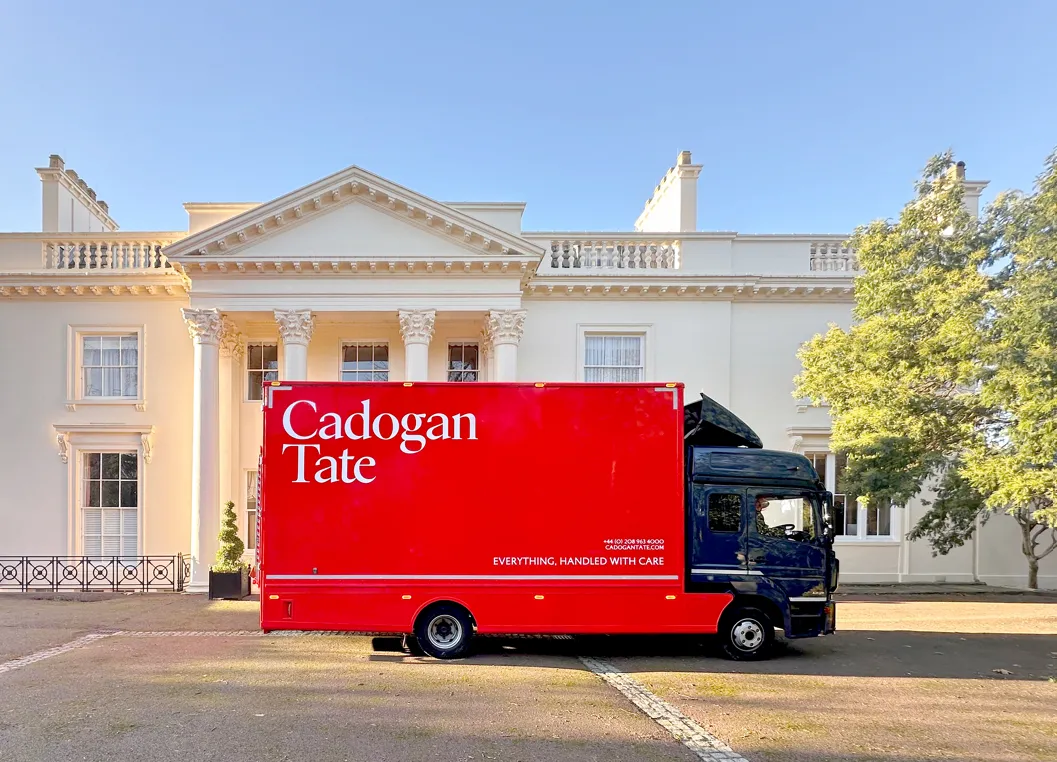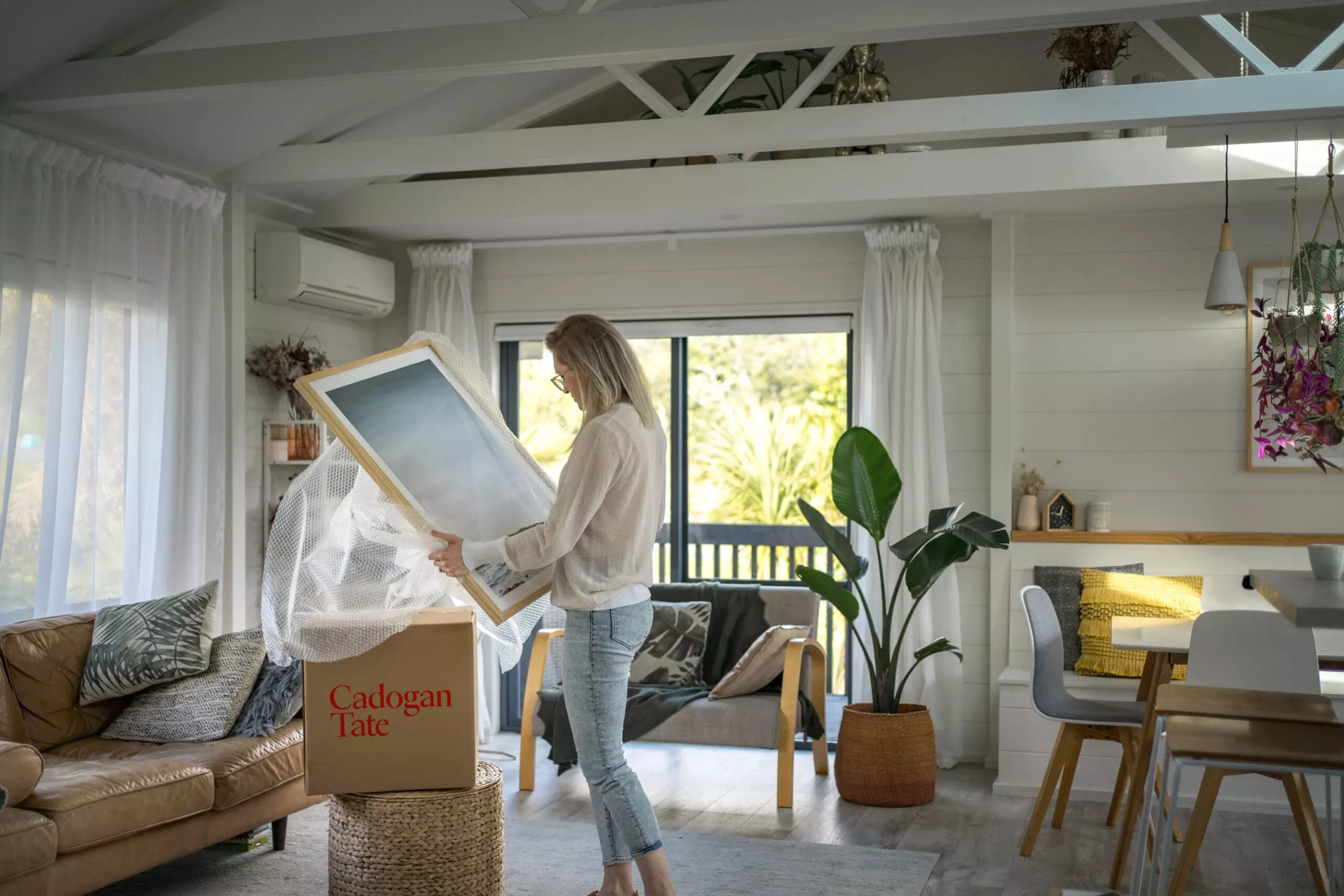Secure Storage and Global Design Moves: Cadogan Tate Paris with Matthieu Le Stang-Heyn
Secure Storage and Global Design Moves: Cadogan Tate Paris with Matthieu Le Stang-Heyn
Matthieu Le Stang-Heyn
Business Development, Cadogan Tate Paris
Paris: the city of light, the single best place on Earth to get dinner… and the home of some of the world’s most iconic works of art and design. If ever a city needed secure storage, Paris is that city. Cadogan Tate’s Paris office has been providing luxury storage solutions to the city’s art dealers, designers and residents for two decades, and as Matthieu Le Stang-Heyn–the office’s Business Development lead–nothing is too challenging for a team that recently moved an entire gas station from Paris to Los Angeles.
Hey Matthieu. What’s your role at Cadogan Tate?
I’ve worked for Cadogan Tech for the past 16 years now in business development for the Paris office.
And what does that job entail? What does your average day look like?
Well, basically I look for new clients or I develop existing clients from other offices. So if, say, a US designer wants to design a home for a client in Paris, and they’ll be sending items from the New York office to Paris, then I take care of everything there and try to develop a business relationship. So that means quotations, site visits, discussions with the team to assess the best means for a delivery or a collection, art installation, organizing operations…
That’s a lot!
Yes, we’re a small team here in Paris, so I do a lot on the operations side as well as in business development.
You said it’s quite a small team. How many people do you have there?
We are 30 in total, and eight people in the office. We have a 4,400-square-meter storage facility near the airport, in a new building we’ve been operating for a year and a half, and also 6,000 square meters in Saint-Ouen, just outside Paris.
What is the most important part of the business in Paris? I imagine you must do a lot of art there?
We do a lot of design, actually. I’d say 60% of the business is design pieces and furniture. But yes, art is also important, especially the art fairs. I’m responsible for those: Categories Paris, when we work for all the exhibitors at Design Miami Paris in October, and a few other galleries at Art Basel Paris, for example.
What’s your background? How did you get into this business?
Oh, I studied logistics, and I worked for freight forwarding companies at the airport, in a specialized niche dealing with aircraft parts. It could be a small bolt missing on a plane to take off…
Ha, and everyone’s sitting on the runway waiting for it?
Exactly! [laughs] So it could be taking care of that, or it could be an entire plane engine. I joined Cadogan Tate as a business developer because the business was picking up in Paris. The Paris branch was up 20 years ago now, and I joined the company three years later.
So you’ve been there pretty much almost the whole time, then?
Almost. Yeah. Almost. It’s strange to think that way. [laughs]
Are there any projects or operations on which you’ve worked over that time that stand out for being especially challenging, or interesting, or rewarding?
Well, this year, we had to move a gas station from France to California.
Wait, the whole building?
Yeah, yeah. It was designed by Jean Prouvé, a very famous French designer in the 40s and 50s. He built houses and also this kind of building. They were designed to be assembled in days.

Wow. That’s really cool.
Yes. And there are art collectors interested in them. A few–maybe two or three–galleries in France managed to keep these pieces from destruction and created the market for them. This one, we had to ship it to Los Angeles. We dismantled it, packed it, loaded it into a container… it was really packed, too, that container! There was no room to add even one more piece. We shipped it via sea freight from France to New York, and then it went on a shuttle on a truck to California to meet the deadline.
Did you meet the deadline?
[Proudly] We did! It arrived the day before the installation was due to start.
I guess there’s no manual as to how to break down something like that, or for how to put it back together again, either.
No, there is nothing written. So I went with the team to see the dismantling, took a piece count, took video of how it was loaded, and sent all the details with the team so that our guys in LA could assess the correct operations. I keep an eye on every single piece and every single step for difficult artwork or difficult pieces to install so that there are no headaches upon arrival, no damage, and everyone is happy.
Absolutely.
And! Another thing: in May, we had to ship a big sideboard to Miami. We installed all the other furniture at the house back in January. So the designer called us then, and we had discussions about the project for months. The easiest way would be to crane this sideboard–made of travertine, almost four meters long, weighing one ton–to the seventh floor, but it was impossible to use a crane on this building. So the only way was to move it with the elevator, carry it through the corridors, and assemble it on site.

The Miami team did a mock-up in cardboard and wood to show the clients the biggest piece that could be brought into the house. We asked the workshop not to glue the top on, otherwise it would be too big for the door. And then…
Oh no.
Obviously, the workshop glued the top.
Nooooooo!
So we had to find a solution to pack it in a way that we can tilt it, enter to the door, and it won’t fit. So we worked with our crate maker to make something very easy to move, without using a crane or a gantry.
And you got it into the apartment?
Yes. That’s kind of a challenge that I like to work on, and our clients rely on us to find solutions.
That sounds like everyone’s house-moving nightmare, but scaled up by ten.
[Laughs] Oh, yeah, it’s scaled up. With these objects, you can have a lot of troubles. But we have the answers.



